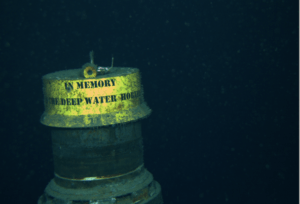A Decade Later, the Deepwater Horizon Oil Spill Has Left an Abyssal Wasteland
See full report here
Short summary:
The Deepwater Horizon Oil Spill was the largest accidental marine oil spill ever recorded, with some four million barrels of oil released over 87 days.

In 2017, 7 years after the accident, a remote operated vehicle (ROV) revisted the affected site. Clifton Nunnally, a deep sea biologist, reported “nothing prepared us for what we saw”: a slick black wasteland, empty of all its usual denizens. At locations proximal to the wellhead, megafaunal communities are more homogeneous than in unimpacted areas, lacking many taxonomic groups. The LUMCON team published in Royal Society Open Science that it was clear the site was toxic and possibly irrevocably spoiled.
The area had been taken over by strange crabs and shrimp that were either deformed, tumour ridden or in an apparent state of sleep-walking. The researchers hypothesize that degrading hydrocarbons are what’s luring unwitting crabs from the surrounding seafloor to the deep-sea equivalent of a toxic dump. “The chemical makeup of oil is similar to the oils naturally present on crustaceans,” Nunnally says. “They’re attracted to the oil site, but everything goes downhill for them once they’re in the area.” Once lured in, the crabs lose their ability to leave. With no other species able to thrive in the area, the crabs have no food source—except each other.
The cleanup and restoration had cost nearly $65 billion and spotlighted the agony of certain animals, such as pelicans stained brown from oil and turtles caked in sludge. But researchers and the public paid little attention at the time to the harder-to-reach deep dwellers such as isopods and corals, according to Nunnally. “The deep sea is always out of sight, out of mind,” he says. “You can burn off and disperse oil on the surface, but we don’t have the technology to get rid of oil on the seafloor.” So approximately 10 million gallons of it settled there.
Though the surface water above the spill site is the same vibrant blue as the rest of the Gulf of Mexico, “the deep sea works on a slower time scale,” Nunnally says. “We know that disasters like this take a long time to recover from.”
The scope of impacts may extend beyond the impacted sites with the potential for impacts to pelagic food webs and commercially important species. Overall, deep-sea ecosystem health, 7 years post spill, is recovering slowly and lingering effects may be extreme.